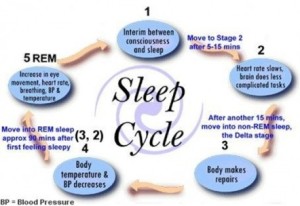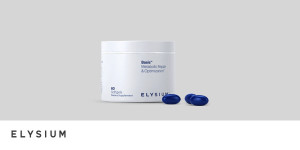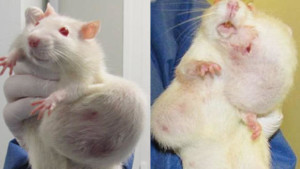Have you ever asked yourself why you yawn? I have always thought that yawning was a sign of fatigue, yet I would find myself yawning when I wasn’t even tired. The exact reason as to why we yawn is actually still unclear. Even though science can rarely prove things to be true without a shadow of doubt, it seems funny that the reason for such a common action, like yawning, still remains a mystery.
In June 2010, scientists who specialize in yawning met in Paris for the first International Conference on Yawning (yes, this actually happened!). The experts wanted to know what the point of yawning was. Why exactly does yawning accomplish? While nothing definitive was concluded, many hypotheses were talked about throughout the conference. According to the The Week, here are the five hypotheses that had the best evidence:
- “A mechanism for cooling the brain”
- Andrew and Gordon Gallup of the University of Albany came to this conclusion by studying yawning in college students. The participants consisted of 33 students, twenty females and thirteen males, all between the ages of eighteen and twenty-five. The participants were split randomly into three groups of eleven. One group held a cold pack to their foreheads, while the two other groups held a hot pack and a room temperature pack to their foreheads, respectively. Each participant was instructed to hold the pack to his or her forehead for head for 4 minutes and 50 seconds. Out of all the participants who held the cold pack, only one participant yawned, and that was only one yawn. On the other hand, the total yawns for the warm pack and the room temperature pack were the exact same. Even though more people yawned with the room temperature pack. In conclusion, those that held warmer packs yawned more. The brain is more efficient when it is cooler, so when the brain is overheated, yawning helps send cold blood into the brain to “maintain optimal levels of mental efficiency.” However, some scientists doubt this theory because the body already has cooling mechanisms. What is the purpose of another one? I have confidence in this study because the reported p-value is .0199. That is a very significant number that proves that the data collected from the study is reliable. Also, the Gallup brothers designed the study quite well. They had a control group and manipulated the temperatures of the packs to create an experiment. However, the sample size is quite small. Studying 33 people is not as effective as studying 100 or 1000 people. However, the significant p-value leaves me convinced that I should trust the results of this study.
- “An invitation to sex”
- Yes, I am just as shocked and confused as you are, and probably for good reason. Dutch researcher Wolter Seuntjens contends that yawning is “sometimes a subconscious invitation to sex,” I have been unable to find any research study to support this claim. He developed this theory after hearing several anecdotes about people who yawn during intercourse. While this theory sounded quite interesting, I was unable to find any observational or experimental studies on the idea. AlsoAnd we know from SC200 that anecdotal evidence is not sufficient or reliable at all., Seuntjens’s logic does not make sense. Just because one is yawning during intercourse does not make it an invitation. Of course, there is the possibility that yawning could be a sign of sexual pleasure. However, I am hesitant to believe this theory because of this during-before issue.
- “A means of building empathy”
- This hypothesis actually deals with “yawning’s infectious nature.” Researchers at Birkbeck College of London University conducted a study of autistic children. These children were used in the study because they are often unable to to “develop normal emotional ties or feel empathy.” The study showed that autistic children do not become victims of contagious yawns. Unfortunately, I was not able to find out how the study was actually conducted so there is really no evidence that this is reliable. However, a study was conducted to analyze the connection between yawning and psychopathy. In other words, are psychopaths immune to contagious yawning? In the experiments, 135 college males and females were used. They were not randomly selected because their selection to participate in the study was based on a PPI-R exam. Participants were told to sit in a padded chair in a “dimly lit, radio frequency anechoic chamber.” They sat in front of computer monitors while wearing noise canceling headphones. The watched a movie of different people’s expressions. The test conductors got results through electrodes that were hooked up to the participants. The results found that more women yawned than men, however the difference was not significant (p-value= .249). In the end, those that showed more traits of psychopathy based off of the PPI-R test yawned less frequently than those who scored lower. I am hesitant to believe these results because it is difficult to measure psychopathy. Also, the p-value is a fairly large number, so there is a high probability that this study was due to chance or third variables.
- “A way to boost oxygen in the body”
- This was actually the leading yawning theory for many years. Scientists claimed that yawns were caused by low oxygen levels in the lungs. The air retrieved during a yawn would be able to boost the oxygen levels in the bloodstream. In fact, this theory dates back to the time of Hippocrates. In the fourth century B.C., Hippocrates described yawning as getting rid of “bad air” to increase “good air” in the brain. Despite this theory’s success, scientists have now discovered that human lungs are unable to detect low oxygen levels. More recent studies have now shown that people with oxygen-depriving medical conditions or exercisers do not yawn more than the average person. I think that this theory is very complex. Both sides of the theory seem plausible. But, because of this valid contradiction, I am still left in the dark on which side I believe.
- “A leftover, useless behavior”
- There are also may scientists who believe that we yawn for absolutely no reason. Richard Roberts from Tennessee’s Genetics and Prenatal Diagnostic Center believes that yawning is just a leftover action from everyones time as a fetus. After studying many ultrasound scans of fetuses with potential medical problems, he discovered that the fetuses began to yawn and hiccup as early as 11 weeks. Roberts noticed that the yawns on average lasted six seconds. Roberts believes that fetal yawning promote lung development. Therefore, yawning ex utero just became a habit born form everyones time as a fetus. There is no denying that fetal yawning is evident. However, the fact that yawning might be a useless habit does not settle well with me. How could something so contagious and so common be merely a leftover action? No matter what though, Roberts still has a very interesting theory on his hands.
Even after analyzing the top five theories of “why we yawn,” the answer to this common question is still unclear. I am starting to believe that these theories are not mutually exclusive. Therefore, it seems highly possible that many of these theories can coexist. If scientists conduct a multi-experiment research study, that would be highly effective. Scientists should use a random and large sample size (1,000+ people). They could use all of the experimental studies used to test the other theories. But, conducting them on the same people would prove or disprove that these theories can all coexist. It is quite ironic how the purpose of an everyday action is still a mystery.










































 The easiest memories to manipulate are childhood memories, this is mainly in part to the large gap of time between the event and the recall. To study this claim, psychologists have conducted numerous experiments involving the use of several real childhood memories and one that never happened. Individuals the first time they heard the made up memory said they had no recollection of it, but when brought back in at a later date many of them added details and elaborated on the false memory. Much of this is due to our lousy intuition. Studies like these have undergone thorough meta-analysis, so it is proven beyond reasonable doubt that we can implant memories especially those pertaining to ones
The easiest memories to manipulate are childhood memories, this is mainly in part to the large gap of time between the event and the recall. To study this claim, psychologists have conducted numerous experiments involving the use of several real childhood memories and one that never happened. Individuals the first time they heard the made up memory said they had no recollection of it, but when brought back in at a later date many of them added details and elaborated on the false memory. Much of this is due to our lousy intuition. Studies like these have undergone thorough meta-analysis, so it is proven beyond reasonable doubt that we can implant memories especially those pertaining to ones  Knowing that memories actually can be implanted into ones mind, I started wondering how accurate the science of t
Knowing that memories actually can be implanted into ones mind, I started wondering how accurate the science of t



 ccording to this article published in the
ccording to this article published in the 






